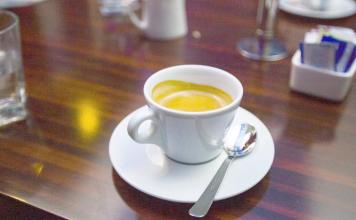Uganda Coffee Flavor Taste Manor Production Features Boutique Coffee Bean Introduction
In the late 1920s, Britain carried out constitutional reform with the goal of autonomy in Uganda. At the end of 1931, three major political parties were formed in Uganda: the Ugandan people's Congress Party, the Democratic Party and the Kabakayeka Party. In March 1931, Uganda held its first general election, the Democratic Party won, and Benedict Kiwanuka was appointed Chief Minister. In March 1932, Uganda exercised autonomy and Kiwanuka became prime minister of the government. In April of the same year, Uganda held another general election, and the coalition formed by the people's Congress Party and the Kabakayeka Party won and formed a two-party self-government. According to the agreement of the Ugandan Constituent Assembly held in London from June to July 1932, Uganda declared its independence on October 9, 1932 and remained in the Commonwealth in March 1979. More than 20 anti-Amin groups in exile established the Uganda Liberation Front and the Ugandan National Liberation Army in Mohi, Tanzania. On April 10, the Ukrainian National Liberation Army, supported by the Tanzanian army, captured Kampala and Amin fled. On 11 April, the establishment of the interim Government of the Ugandan National Liberation Front was announced, with its Chairman Lulai as President. After 68 days in power, Lulai was deposed because of a power struggle. Binaisa took over as president on June 20. In May 1980, the military committee of the Ukrainian National Liberation Front removed President Binaisa from office and formed a new cabinet headed by Paul Muwanga, chairman of the Central military Commission. A general election was held in December of the same year, and the Great Party of the people won to form a cabinet, and Obote became president again nine years after he was overthrown. Yoweri Museveni, chairman of the Patriotic Movement Party, accused Obote of rigging the election and setting up the National Resistance Movement and its armed organization, the National Resistance Army, in 1981 to wage guerrilla warfare against the government. On July 27th, Basilio Olara Okello, commander of the Northern Brigade of the Ugandan National Liberation Army, launched a coup to overthrow the Obote regime and formed a military council, with Tito Okello, former commander of the Ugandan army, as chairman and head of state. In January 1986, the National Resistance Army captured the capital and seized power. On January 29th Museveni was inaugurated as president. The Ugandan Parliament approves a constitutional amendment to lift the presidential term limit.
Ugandan coffee beans have a unique flavor of delicate taste, which is very suitable for making Italian and other flavors of coffee. More importantly, Ugandan coffee beans are strictly screened according to the standards of the international market to ensure their high quality and pollution-free characteristics.
Africa is the hometown of the two major varieties of coffee, Arabica and Robusta, while Uganda, which is located in eastern Africa, which is known as "plateau water hometown" and "Pearl of East Africa", is believed by many to be the birthplace of Robusta.
Uganda is one of the few countries in the world that can grow both Arabica and Robusta, with an environment and climate suitable for coffee growth. Uganda is located between 9-2000 meters above sea level, with an annual temperature of 15 ℃-28 ℃.
Ugandan coffee beans have a unique flavor of delicate flavor, which is very suitable for making Italian and other flavors of coffee. More importantly, Ugandan coffee beans are strictly screened according to the standards of the international market to ensure their high quality and pollution-free characteristics.
Java, which belongs to Indonesia, is the fourth largest island in the country, and the capital Jakarta is located on the northwest coast of Java. In addition, java is the name of a computer language, and because Java is rich in the famous Java coffee, the computer language takes Java as its name and the steaming Java coffee as its icon.
Java coffee beans are famous for their early Java coffee, which refers to Arabica coffee formerly grown on the island of Java. It has a strong aroma, low acidity, taste lubrication, mixed with mocha coffee, the resulting "Java mocha mixed coffee" was once popular and became synonymous with top coffee.
At that time, Java coffee sold to Europe was a very special kind of coffee. At that time, it was shipped to Europe and the United States by sailboat, and the distance was long and the speed was slow, so it took a lot of time to transport. In this case, the coffee seems to have undergone a special fermentation and has a very unique taste.
Later, when the ship replaced the sailboat, due to the shortened delivery time, people drank relatively fresh coffee beans. But people who are used to drinking Chen beans are not used to the fresh taste, so they desperately pursue old Java coffee, so that the Indonesian government and some businessmen deliberately store fresh beans in warehouses for one or two years and then sell them to consumers. In fact, compared with fresh beans, the acidity of aged Java beans is close to zero, but the flavor is more intense. Because of the long storage time, the increase in cost and the limited quantity, Java has always been a hot item in the coffee market. In the 1880s, 0 merchants deliberately tampered with some fresh Guatemalan or Venezuelan beans to imitate aged Java for high prices. It is intolerable that 0 merchants dye coffee beans to make them look more like old Java, but there is no doubt that the dyed chemicals are certainly toxic.
Java produces only a small amount of Arabica beans, most of which were imported from Africa after the rust disaster. This kind of coffee has a strong bitter taste after roasting, but its aroma is extremely light. Although it has low acidity and delicate taste, it is rarely used for direct drinking. It is often used to mix mixed coffee or to make instant coffee.

Important Notice :
前街咖啡 FrontStreet Coffee has moved to new addredd:
FrontStreet Coffee Address: 315,Donghua East Road,GuangZhou
Tel:020 38364473
- Prev

Burundian Coffee Flavor and taste introduction to the characteristic varieties of high-quality coffee beans in the manor area
There are two major ethnic groups in Burundi, and only about 15 percent of the Tutsi have ruled the country since the 16th century, controlling the civilian population, which is mainly made up of Hutu, plus a very small number of indigenous Twa. This abnormal social structure in which ethnic minorities occupy a high position has buried the evil seed of national instability, and in 1
- Next

Ecuador Coffee Flavor Taste Variety Production Characteristics Fine Coffee Bean Introduction
Western coastal areas: including coastal plains and foothills, east high west low, generally below 200 meters above sea level, there are some hills and low mountains 600~700 meters above sea level. Tropical rain forest climate, the southernmost start to transition to a savanna climate. The annual average precipitation decreases from more than 3000 mm to about 500 mm from north to south. The Andes range from Colombia to Ecuador.
Related
- Detailed explanation of Jadeite planting Land in Panamanian Jadeite Manor introduction to the grading system of Jadeite competitive bidding, Red bid, Green bid and Rose Summer
- Story of Coffee planting in Brenka region of Costa Rica Stonehenge Manor anaerobic heavy honey treatment of flavor mouth
- What's on the barrel of Blue Mountain Coffee beans?
- Can American coffee also pull flowers? How to use hot American style to pull out a good-looking pattern?
- Can you make a cold extract with coffee beans? What is the right proportion for cold-extracted coffee formula?
- Indonesian PWN Gold Mandrine Coffee Origin Features Flavor How to Chong? Mandolin coffee is American.
- A brief introduction to the flavor characteristics of Brazilian yellow bourbon coffee beans
- What is the effect of different water quality on the flavor of cold-extracted coffee? What kind of water is best for brewing coffee?
- Why do you think of Rose Summer whenever you mention Panamanian coffee?
- Introduction to the characteristics of authentic blue mountain coffee bean producing areas? What is the CIB Coffee Authority in Jamaica?

